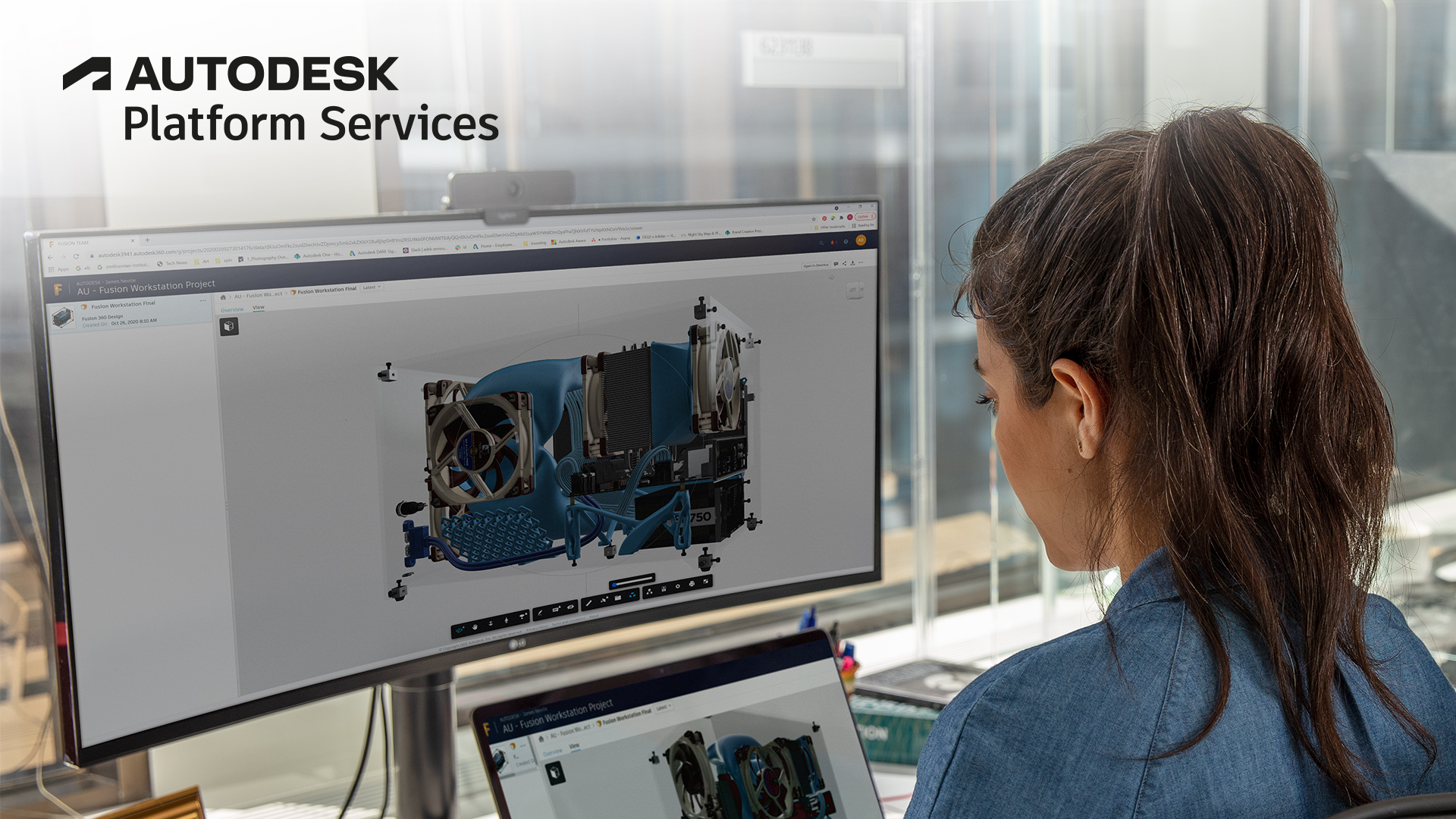20 Jul 2017
Running Forge Viewer on AWS Lambda Server and API Gateway

Here is a brief tutorial exposing my experience running the Forge Viewer on top of an Amazon Lambda Server: AWS Lambda is a compute service that lets you run code without provisioning or managing servers. That's basically a way to run a single function upon a trigger mechanism.
My goal was to be able to put online a web page that displays a model loaded by the Forge Viewer, based on a Lambda server. In order to achieve that, we also need to use API Gateway in order to expose our lambda to the outside world. This tutorial assumes that you have access to an AWS account.
1/ Lambda Server code
Let's get started, I will use Node.js as it is my preferred back-end technology. A lambda is simply a function that may or may not take inputs from its trigger and returns a value. So I wrote a Node.js function from a basic lambda template that does the following:
- Request a valid token from Forge
- Reads an index.ejs file that contains the html code of my page
- Reads an app.ejs file that contains the viewer code
- Formats the data above by including the token in the app code and the app code in a script, then output the final result which is a valid html string that contains all the info to load our model
Here is how my lambda code looks like:
| 'use strict' | |
| /////////////////////////////////////////////////////////// | |
| // Node imports, must be installed with npm install and | |
| // packaged along the lambda code zip | |
| // | |
| /////////////////////////////////////////////////////////// | |
| const Promise = require('bluebird') | |
| const Forge = require('forge-apis') | |
| const config = require('./config') | |
| const path = require('path') | |
| const fs = require('mz/fs') | |
| const ejs = require('ejs') | |
| /////////////////////////////////////////////////////////// | |
| // Lambda Handler, this is the method that gets invoked | |
| // when the lambda server is triggered | |
| // | |
| /////////////////////////////////////////////////////////// | |
| const lambdaHandler = (event, context, callback) => { | |
| // set the PATH | |
| process.env['PATH'] = | |
| process.env['PATH'] + ':' + | |
| process.env['LAMBDA_TASK_ROOT'] | |
| // gets oauth token from Forge API | |
| const oAuth2TwoLegged = new Forge.AuthClientTwoLegged( | |
| process.env.FORGE_CLIENT_ID, | |
| process.env.FORGE_CLIENT_SECRET, | |
| ['viewables:read']) | |
| // packs the various tasks required to generate html code | |
| const tasks = [ | |
| fs.readFile(path.resolve(__dirname, 'index.ejs'), 'utf8'), | |
| fs.readFile(path.resolve(__dirname, 'app.ejs'), 'utf8'), | |
| oAuth2TwoLegged.authenticate() | |
| ] | |
| // wait for completion of each tasks | |
| Promise.all(tasks).then((res) => { | |
| const htmlEjs = res[0] | |
| const appEjs = res[1] | |
| const token = res[2] | |
| // formats client code with token | |
| const app = ejs.render(appEjs, { | |
| accessToken: token.access_token, | |
| urn: process.env.URN | |
| }) | |
| // renders html code | |
| const html = ejs.render(htmlEjs, { | |
| viewer3D: config.viewer.viewer3D, | |
| threeJS: config.viewer.threeJS, | |
| style: config.viewer.style, | |
| app: app | |
| }) | |
| // returns response to caller | |
| callback (null, html.replace(/"/g, '"')) | |
| }) | |
| } | |
| exports.handler = lambdaHandler |
And the client code:
| ///////////////////////////////////////////////////////// | |
| // Initialize viewer environment | |
| // | |
| ///////////////////////////////////////////////////////// | |
| function initialize (options) { | |
| return new Promise(function(resolve, reject) { | |
| Autodesk.Viewing.Initializer (options, | |
| function () { | |
| resolve () | |
| }, function(error){ | |
| reject (error) | |
| }) | |
| }) | |
| } | |
| ///////////////////////////////////////////////////////// | |
| // load document from URN | |
| // | |
| ///////////////////////////////////////////////////////// | |
| function loadDocument (urn) { | |
| return new Promise(function(resolve, reject) { | |
| var paramUrn = !urn.startsWith("urn:") | |
| ? "urn:" + urn | |
| : urn | |
| Autodesk.Viewing.Document.load(paramUrn, | |
| function(doc) { | |
| resolve (doc) | |
| }, function (error) { | |
| reject (error) | |
| }) | |
| }) | |
| } | |
| ///////////////////////////////////////////////////////// | |
| // Get viewable items from document | |
| // | |
| ///////////////////////////////////////////////////////// | |
| function getViewableItems (doc, roles) { | |
| var rootItem = doc.getRootItem() | |
| var items = [] | |
| var roleArray = roles | |
| ? (Array.isArray(roles) ? roles : [roles]) | |
| : [] | |
| roleArray.forEach(function(role) { | |
| var subItems = | |
| Autodesk.Viewing.Document.getSubItemsWithProperties( | |
| rootItem, { type: "geometry", role: role }, true) | |
| items = items.concat(subItems) | |
| }) | |
| return items | |
| } | |
| ///////////////////////////////////////////////////////// | |
| // Initialize Environment | |
| // | |
| ///////////////////////////////////////////////////////// | |
| initialize({ | |
| accessToken: "<%=accessToken%>", | |
| env: "AutodeskProduction" | |
| }).then(function() { | |
| loadDocument ("<%=urn%>").then(function(doc) { | |
| var items = getViewableItems (doc, ["3d", "2d"]) | |
| var path = doc.getViewablePath(items[0]) | |
| var viewerDiv = document.getElementById("viewer") | |
| var viewer = new Autodesk.Viewing.Private.GuiViewer3D(viewerDiv) | |
| viewer.start(path) | |
| }) | |
| }) |
2/ Create a Lambda function on AWS

3/ Uploading the code
Once you have created a Lambda function, you need to upload your code as a package: you need to upload all required dependencies along the node.js scripts, so run an npm install and zip the whole content of the directory. Do not zip the containing directory itself. Then go to the Code tab and upload your zip:

4/ Defining ENVIRONMENT variables
Define the following environment variables with appropriate values: URN (URN of a previously translated model on Forge), corresponding Forge credentials FORGE_CLIENT_ID and FORGE_CLIENT_SECRET
5/ Testing the Lambda function
You can test the output of your lambda function using the Test button, you should see the html output string in the console window:

6/ Exposing the Lambda function to the web
Now that our Lambda is working, we will use API Gateway to expose a public endpoint that will trigger it: got to API Gateway section in AWS and create a new API:

Create a new Resource, I call it /viewer, then add a /GET endpoint:

Map the /GET endpoint to the Lambda function:

7/ Configuring the Endpoint
We need to configure our endpoint a little so it's compatible with the response from the Lambda function. Edit the Integration Response so it looks as follow:

Then configure the Method Response as follow:

8/ Creating a Stage
We are done with the endpoint now, but we need to create a Stage in order to expose it to the web: I create a dev stage which will show what is the public url:

Because our resource is named /viewer, we need to add that to the url, so our complete url is: https://ys7bat7ci2.execute-api.eu-west-1.amazonaws.com/dev/viewer. Pretty unfriendly but you can use Route 53 or any other DNS management system in order to map it to your own domain.
Open the url in a browser et voila! The complete source of my project is available here: https://github.com/leefsmp/forge-lambda







